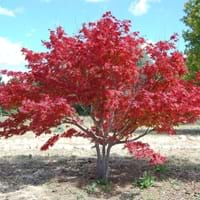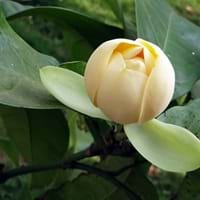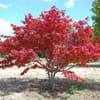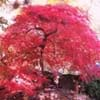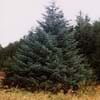Life Span
Perennial
Perennial
Origin
Eastern Asia, China, Japan, Korea
Cambodia, China, India, Indonesia, Papua New Guinea, Philippines, Singapore, Thailand, Viet Nam
Types
Not Available
Magnolia angatensis, Magnolia beccarii, Magnolia championii
Habitat
gardens, Woodland Garden Secondary, Woodlands
Wide range of ecological site
USDA Hardiness Zone
4-7
10-15
AHS Heat Zone
8-2
Not Available
Sunset Zone
A3, 2a, 2b, 3a, 3b, 4, 5, 6, 7, 8, 9, 10, 12, 14, 15, 16, 17, 18, 19, 20, 21, 22, 23, 24
Not Available
Habit
Oval or Rounded
Oval or Rounded
Flower Color
Red
Gold, White, Yellow
Flower Color Modifier
Not Available
Bicolor
Fruit Color
Red, Brown
Brown
Leaf Color in Spring
Red, Burgundy, Dark Red, Copper
Green
Leaf Color in Summer
Red, Green, Bronze
Green
Leaf Color in Fall
Red, Crimson, Orange Red
Green, Yellow green
Leaf Color in Winter
Not Available
Gray Green
Plant Season
Spring, Summer, Fall, Winter
Spring, Summer
Sunlight
Partial Sun, Partial shade
Full Sun, Partial Sun
Type of Soil
Clay, Loam, Sand
Clay, Loam
The pH of Soil
Acidic, Neutral
Acidic, Neutral
Soil Drainage
Average
Well drained
Bloom Time
Early Spring, Spring, Late Spring, Early Summer
Spring, Late Spring
Tolerances
Not Available
Not Available
Where to Plant?
Ground
Ground
How to Plant?
Budding, Seedlings, Stem Cutting
Seedlings, Transplanting
Plant Maintenance
Medium
Medium
Watering Requirements
Average Water Needs, Needs less watering
Prefer drip-irrigation instead of Over-head watering
In Summer
Lots of watering
Lots of watering
In Spring
Moderate
Moderate
In Winter
Average Water
Average Water
Soil pH
Acidic, Neutral
Acidic, Neutral
Soil Type
Loam, Sand
Clay, Loam, Sand
Soil Drainage Capacity
Average
Well drained
Sun Exposure
Full Sun, Partial Sun, Partial shade
Full Sun, Partial Sun
Pruning
Remove damaged leaves, Remove dead branches, Remove dead leaves
Prune if you want to improve plant shape
Fertilizers
All-Purpose Liquid Fertilizer, Apply N-P-K, since leafy plants, use higher nitrogen content fertilizer
Fertilize in late fall, fertilize in spring, Requires high amount of nitrogen
Pests and Diseases
Aphids, Beetles, Mealybugs, Red blotch, Scale, Sooty Mold
Aphids, Bacterial Blight, Canker, Crown gall, Hoplia beetle, Leaf burn, Leaf spot, Mealybugs, Powdery mildew, Red blotch, Scorch, Soft scales, Thripes, Wetwood
Plant Tolerance
Drought, Full Sun, Shade areas
Not Available
Flowers
Insignificant
Showy
Flower Petal Number
Single
Single
Foliage Texture
Fine
Coarse
Foliage Sheen
Matte
Matte
Attracts
Not Available
Not Available
Allergy
Not Available
Not Available
Aesthetic Uses
Bonsai, Borders
Showy Purposes
Beauty Benefits
Not Available
Treatment of Dark Spots
Environmental Uses
Air purification
Air purification
Medicinal Uses
Not Available
Alzheimer’s Disease, Anxiety, Cancer, Digestion problems, Liver problems, Menstrual Cramps, Respiratory Disorders, Weight loss
Part of Plant Used
Sap
Whole plant
Other Uses
Used as preservative
Used as Ornamental plant, Used for its medicinal properties
Used As Indoor Plant
No
Yes
Used As Outdoor Plant
Yes
Yes
Garden Design
Feature Plant, Foundation, Mixed Border
Feature Plant, Foundation, Shade Trees
Botanical Name
ACER palmatum 'Skeeter's Broom'
Magnolia liliifera
Common Name
Downy Japanese Maple, Fullmoon Maple, Japanese Maple
Egg magnolia
In Hindi
Japanese Maple
Magnolia liliifera
In German
japanischer Ahorn
Magnolia Liliifera
In French
érable du Japon
Magnolia Liliifera
In Spanish
arce japonés
Magnolia Liliifera
In Greek
Japanese Maple
Magnolia Liliifera
In Portuguese
bordo japonês
Magnolia Liliifera
In Polish
Klon japoński
Magnolia Liliifera
In Latin
Acer palmatum
Magnolia Liliifera
Phylum
Tracheophyta
Tracheophyta
Class
Magnoliopsida
Magnoliopsida
Order
Sapindales
Magnoliales
Family
Aceraceae
Magnoliaceae
Clade
Angiosperms, Eudicots, Rosids
Angiosperms, Magnoliids
Tribe
Not Available
Not Available
Subfamily
Not Available
Not Available
Number of Species
Not Available
Not Available
Season and Care of Japanese Maple and Magnolia Liliifera
Season and care of Japanese Maple and Magnolia Liliifera is important to know. While considering everything about Japanese Maple and Magnolia Liliifera Care, growing season is an essential factor. Japanese Maple season is Spring, Summer, Fall and Winter and Magnolia Liliifera season is Spring, Summer, Fall and Winter. The type of soil for Japanese Maple is Clay, Loam, Sand and for Magnolia Liliifera is Clay, Loam while the PH of soil for Japanese Maple is Acidic, Neutral and for Magnolia Liliifera is Acidic, Neutral.
Japanese Maple and Magnolia Liliifera Physical Information
Japanese Maple and Magnolia Liliifera physical information is very important for comparison. Japanese Maple height is 150.00 cm and width 90.00 cm whereas Magnolia Liliifera height is 1,500.00 cm and width 1,000.00 cm. The color specification of Japanese Maple and Magnolia Liliifera are as follows:
Japanese Maple flower color: Red
Japanese Maple leaf color: Red, Burgundy, Dark Red and Copper
Magnolia Liliifera flower color: Gold, White and Yellow
- Magnolia Liliifera leaf color: Green
Care of Japanese Maple and Magnolia Liliifera
Care of Japanese Maple and Magnolia Liliifera include pruning, fertilizers, watering etc. Japanese Maple pruning is done Remove damaged leaves, Remove dead branches and Remove dead leaves and Magnolia Liliifera pruning is done Prune if you want to improve plant shape. In summer Japanese Maple needs Lots of watering and in winter, it needs Average Water. Whereas, in summer Magnolia Liliifera needs Lots of watering and in winter, it needs Average Water.
